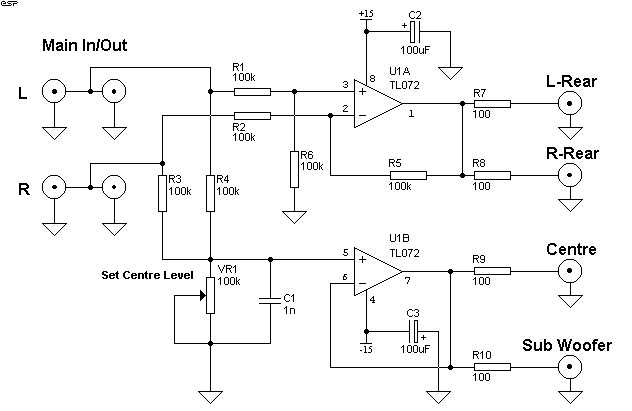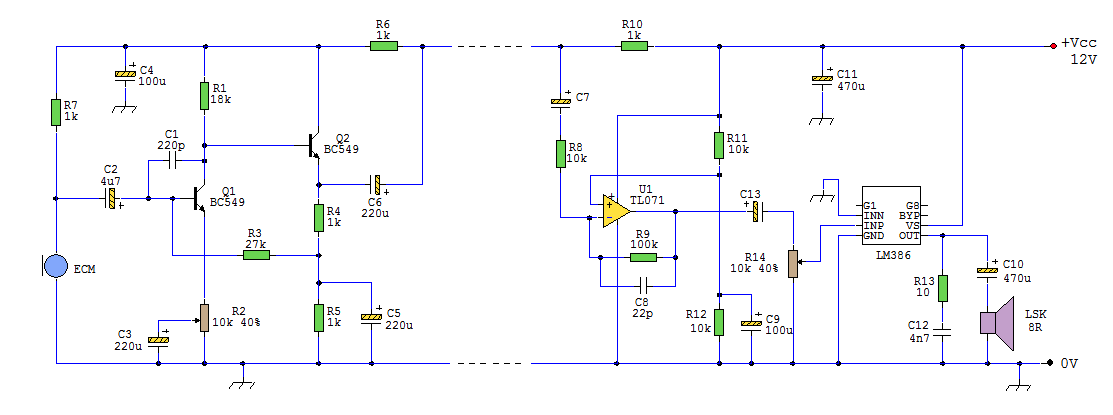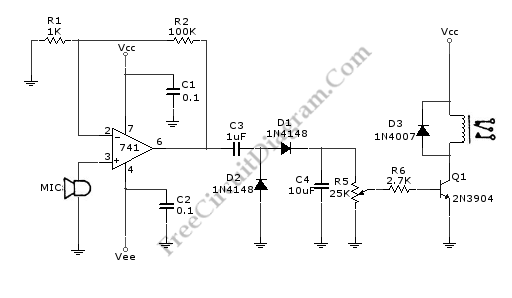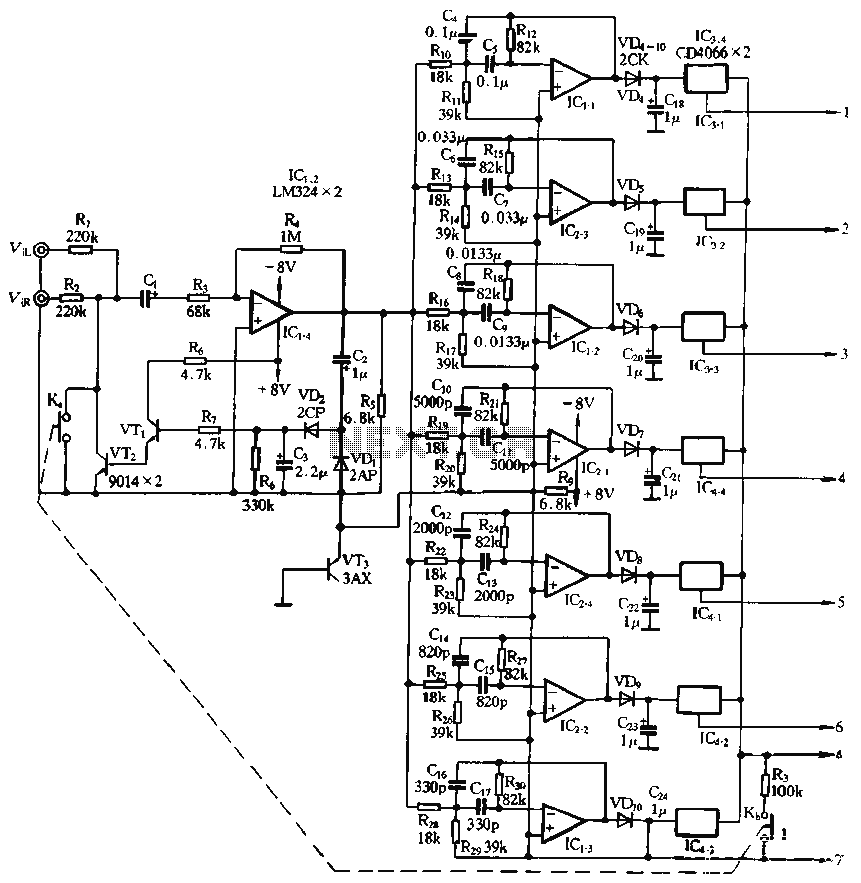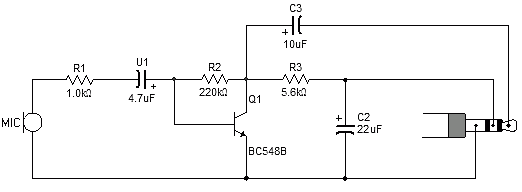
ESP Sound Impairment Monitor
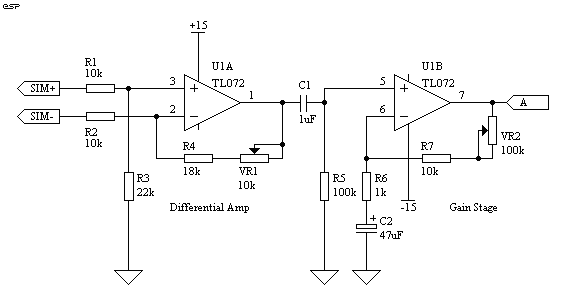
A differential amp used by the SIM, and it is a completely conventional circuit. This is adjustable by using VR1 to null out any normal variations that the amp might show when there is no distortion or other nastiness in evidence. The second stage is a high gain amplifier, and will amplify the residual signal to a level suitable for the rectifier and indicator circuits. More: The opamp shown is adequate for most applications, but the use of a premium device from Analog Devices or Burr-Brown will improve performance, especially at high frequencies. This is not strictly necessary, because the operation of any amplifier protection.
The described circuit is a differential amplifier, which is a fundamental building block in analog electronics, particularly in signal processing applications. The primary function of this circuit is to amplify the difference between two input signals while rejecting any common-mode signals. This characteristic makes it particularly useful in environments where noise and interference are prevalent.
The circuit employs a variable resistor, designated as VR1, which allows for fine-tuning of the amplifier's offset. This adjustment is crucial for nullifying any inherent variations or offsets that may occur in the absence of distortion. By carefully setting VR1, the user can ensure that the output remains stable and accurate, even when the input signals are at their baseline levels.
The first stage of the amplifier is configured to operate as a differential input stage, typically utilizing operational amplifiers (op-amps). These op-amps are selected based on their performance characteristics, with the recommendation to utilize high-quality components from manufacturers such as Analog Devices or Burr-Brown for enhanced performance, particularly at higher frequencies. While standard op-amps may suffice for many applications, premium devices can provide improved bandwidth, lower noise, and better linearity, which are essential for high-fidelity signal processing.
Following the differential input stage, the second stage of the circuit is a high-gain amplifier. This stage is responsible for amplifying the residual signal output from the first stage to a level that is suitable for subsequent processing by rectifier and indicator circuits. The design of this stage must consider the gain requirements and the bandwidth to ensure that the amplified signal retains the integrity of the original input.
The circuit's layout should also incorporate appropriate power supply decoupling and grounding techniques to minimize noise and ensure stable operation. Additionally, the selection of passive components, such as resistors and capacitors, should be made with attention to tolerance and temperature coefficients to maintain performance across varying conditions.
Overall, this differential amplifier circuit is a versatile solution for applications requiring precise signal amplification with minimal distortion and noise, making it an essential component in various electronic systems.A differential amp used by the SIM, and it is a completely conventional circuit. This is adjustable by using VR1 to null out any normal variations that the amp might show when there is no distortion or other nastiness in evidence. The second stage is a high gain amplifier, and will amplify the residual signal to a level suitable for the rectifier and indicator circuits.
The opamp shown is adequate for most applications, but the use of a premium device from Analog Devices or Burr-Brown will improve performance, especially at high frequencies. This is not strictly necessary, because the operation of any amplifier protecti 🔗 External reference
The described circuit is a differential amplifier, which is a fundamental building block in analog electronics, particularly in signal processing applications. The primary function of this circuit is to amplify the difference between two input signals while rejecting any common-mode signals. This characteristic makes it particularly useful in environments where noise and interference are prevalent.
The circuit employs a variable resistor, designated as VR1, which allows for fine-tuning of the amplifier's offset. This adjustment is crucial for nullifying any inherent variations or offsets that may occur in the absence of distortion. By carefully setting VR1, the user can ensure that the output remains stable and accurate, even when the input signals are at their baseline levels.
The first stage of the amplifier is configured to operate as a differential input stage, typically utilizing operational amplifiers (op-amps). These op-amps are selected based on their performance characteristics, with the recommendation to utilize high-quality components from manufacturers such as Analog Devices or Burr-Brown for enhanced performance, particularly at higher frequencies. While standard op-amps may suffice for many applications, premium devices can provide improved bandwidth, lower noise, and better linearity, which are essential for high-fidelity signal processing.
Following the differential input stage, the second stage of the circuit is a high-gain amplifier. This stage is responsible for amplifying the residual signal output from the first stage to a level that is suitable for subsequent processing by rectifier and indicator circuits. The design of this stage must consider the gain requirements and the bandwidth to ensure that the amplified signal retains the integrity of the original input.
The circuit's layout should also incorporate appropriate power supply decoupling and grounding techniques to minimize noise and ensure stable operation. Additionally, the selection of passive components, such as resistors and capacitors, should be made with attention to tolerance and temperature coefficients to maintain performance across varying conditions.
Overall, this differential amplifier circuit is a versatile solution for applications requiring precise signal amplification with minimal distortion and noise, making it an essential component in various electronic systems.A differential amp used by the SIM, and it is a completely conventional circuit. This is adjustable by using VR1 to null out any normal variations that the amp might show when there is no distortion or other nastiness in evidence. The second stage is a high gain amplifier, and will amplify the residual signal to a level suitable for the rectifier and indicator circuits.
The opamp shown is adequate for most applications, but the use of a premium device from Analog Devices or Burr-Brown will improve performance, especially at high frequencies. This is not strictly necessary, because the operation of any amplifier protecti 🔗 External reference
